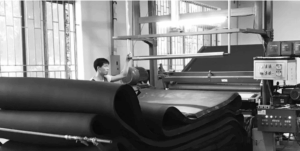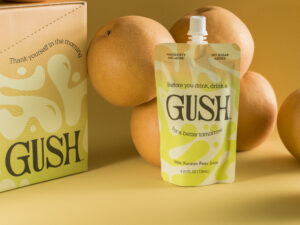Surfing has always been romanticized as a spiritual, nature-bound sport. It’s the image of sun-streaked mornings, salt in your hair, and barefoot freedom. But behind the sunglasses and reef tattoos is a harder truth: modern surfing has an environmental problem.
From petroleum-based boards and neoprene suits to globe-trotting surf tourism and single-use contest trash, surfing, despite its natural setting, often leaves a dirty footprint. And as the global environmental crisis grows more urgent, it’s time for the surf world to reckon with some contradictions and step up to lead in a way that only it uniquely can.
Surfing’s Image vs. Its Reality
To the uninitiated, surfing is one of the most “natural” sports imaginable. No engine. No ball. Just a board and a wave.
But dig deeper, and the industry supporting that board and that wave is far from clean.
The Core Contradiction:
A sport that celebrates nature relies heavily on materials and systems that degrade it.
And unlike industrial sports with arenas and carbon budgets, surfing sells itself as eco-aligned, which makes the disconnect all the more problematic.
The Environmental Toll of Modern Surfing
Surfboards: Light, Fast, and Toxic
The majority of surfboards today are made from:
- Polyurethane and polystyrene foam cores
- Fiberglass cloth
- Petroleum-derived resin (polyester or epoxy)
These boards are lightweight and high-performance, but they’re also:
- Mostly non-recyclable
- Toxic to produce
- Short-lived, often snapping or yellowing within a season
The production process emits volatile organic compounds (VOCs) and generates significant waste. A single factory can produce thousands of boards a year, each one inevitably destined for a landfill.
Wetsuits: Neoprene and Its Dirty Little Secret
Most wetsuits are made from chloroprene rubber, better known as neoprene, a product derived from crude oil or limestone mining.

Neoprene manufacturing is energy-intensive and frequently involves:
- Nitrosamine-producing chemical reactions
- Hazardous waste
- Limited end-of-life recycling
Some brands are shifting to plant-based Yulex and recycled materials – but those options remain expensive and niche.
Travel and Surf Tourism
From Mentawai boat trips to Costa Rican surf camps, chasing waves often means chasing miles.
Air travel is among the highest-impact activities an individual can do. Frequent surf travelers may clock dozens of international flights a year, all while preaching ocean love on Instagram.

Contest Culture and Coastal Waste
Professional surf events, ironically held on the beach, often generate:
- Single-use plastic bottles
- Zip-tied sponsor banners
- Disposable catering waste
- Crowds trampling delicate dune ecosystems
Some contests, like those on the WSL Championship Tour, are making strides toward sustainability, but the culture at large hasn’t caught up.
Surf Industry Blind Spots
The irony of surfing’s environmental footprint lies in its branding. For decades, brands like Quiksilver, Billabong, and Rip Curl marketed a naturalist ideal: clean beaches, barefoot living, and surf shack simplicity.
But these brands built empires on:
- Mass-produced synthetic gear
- Offshored manufacturing
- High-volume seasonal trends
Even “green” capsule collections are often marketing moves more than meaningful change, with questionable supply chains and no transparency around lifecycle emissions.
A Culture Shift Is Coming – Slowly
Fortunately, some corners of surf culture are pushing for evolution – not just aesthetic minimalism but actual environmental minimalism.
Eco-Leaders in the Surf Space
- Vessel Surfboards and Swaylocks DIY builders focus on cork, hemp, and recycled EPS foam boards
- Patagonia paved the way with Yulex wetsuits and fair-trade supply chains
- Surfboard recycling programs are popping up in Australia, California, and France
- Protect Blue, Surfers for Climate, and Save the Waves are leading advocacy efforts
Still, these efforts are underground compared to the mainstream surf industry, which remains largely powered by petrochemicals and convenience.
A More Rooted Way to Travel and Surf
The boom-and-bust model of surf tourism – fly in, rip, fly out – isn’t just environmentally unsound; it’s spiritually hollow. Surfers like Greg Long and Dave Rastovich have spoken openly about the importance of slowing down and planting roots in the places we visit. Instead of hopping from one coastline to the next, they advocate for localized immersion: staying put, getting to know the tides, the local wildlife, and the people who call those shores home.
By traveling less frequently and more intentionally, we reduce our carbon footprint and gain a richer experience. Imagine surf trips built around conservation projects, youth education, or local clean-up efforts. It’s not a radical idea – it’s simply alignment between the surfer’s connection to the ocean and responsibility to it.
Eco Boards That Actually Rip
Another promising evolution is the emergence of high-performance eco-boards. From hollow wooden builds to flax-wrapped recycled foam cores, sustainable board design is no longer relegated to backyard experimentation – it’s being validated in serious surf.
Take the Verdure Hybrid Twin or the Funner Surf Craft Mid Twin: boards made with cork, wood, 3D printed parabolic rails, and plant-based epoxies. They’re light, lively, and in some cases outlasting traditional PU boards. Pro surfers are riding them. Shops like Daydream are planting Sea Trees for every board sold.
Meanwhile, local shapers are getting creative, repurposing windsurf boards, old blanks, and even shaping their own fins from upcycled materials. The narrative is shifting: a board’s story – where it comes from, how it was made – matters just as much as how it surfs.
Surfing as Ecological Stewardship
The post-COVID pause, the Fight for the Bight, and recent wildfires have given the surfing world a chance to reflect. Surfers rallied to stop Equinor’s offshore drilling plans in Australia. They’re supporting kelp farms and demanding cleaner wetsuit production. There’s an energy building – a sense that surfing isn’t just about catching waves, but about protecting the very ecosystems that make waves possible.
The shift doesn’t require perfection. Just intention. And community. Whether it’s buying one less board, flying one less trip, or picking up one more piece of plastic, every act is a small declaration that we’re not just users of the sea – we’re caretakers.
So if we want the ocean to keep giving, we’ve got to start giving back. One wave, one board, one choice at a time.







